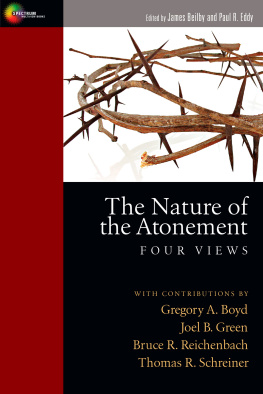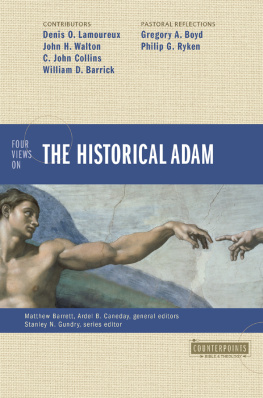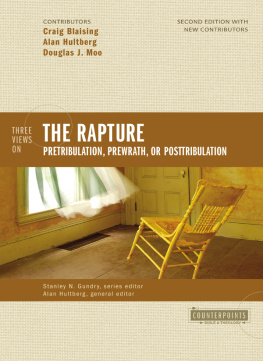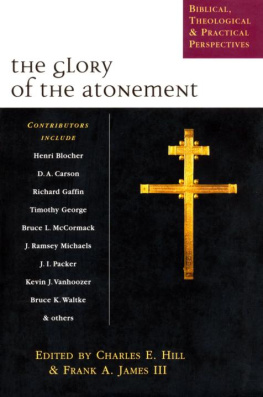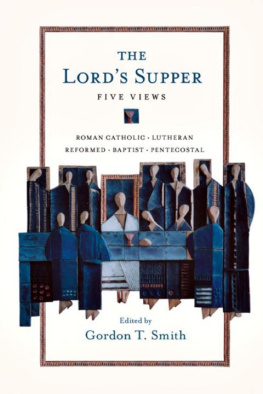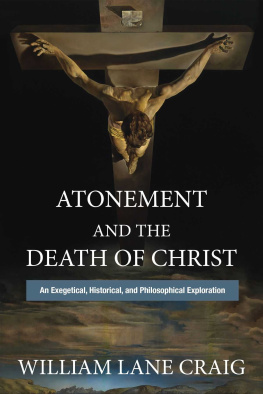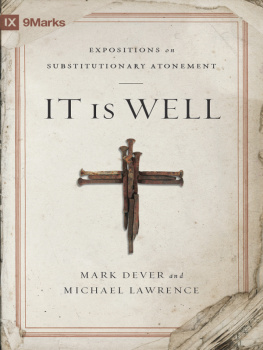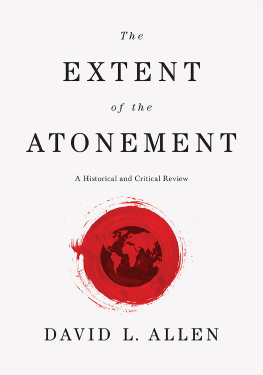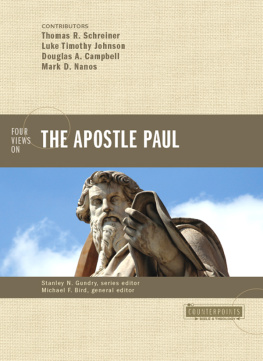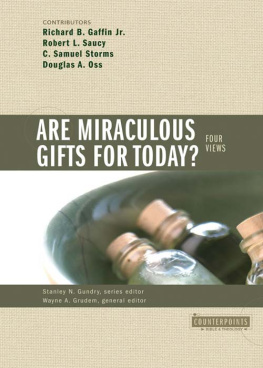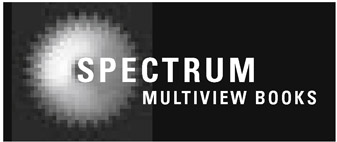
The Nature of
the Atonement
FOUR VIEW
EDITED BY James Beilby
& Paul R. Eddy
WITH CONTRIBUTIONS BY Gregory A. Boyd, Joel B. Green,
Bruce R. Reichenbach & Thomas R. Schreiner
InterVarsity Press
P.O. Box 1400, Downers Grove, IL 60515-1426
World Wide Web: www.ivpress.com
E-mail:
2006 by James K. Beilby and Paul R. Eddy
All rights reserved. No part of this book may be reproduced in any form without written permission from
InterVarsity Press.
InterVarsity Pressis the book-publishing division of InterVarsity Christian Fellowship/USA, a movement of students and faculty active on campus at hundreds of universities, colleges and schools of nursing in the United States of America, and a member movement of the International Fellowship of Evangelical Students. For information about local and regional activities, write Public Relations Dept., InterVarsity Christian Fellowship/USA, 6400 Schroeder Rd., P.O. Box 7895, Madison, WI 53707-7895, or visit the IVCF website at .
Unless otherwise indicated, Scripture quotations in sections by Bruce Reichenbach are taken from the Holy Bible, New International Version. NIV. Copyright 1973, 1978, 1984 by International Bible Society. Used by permission of Zondervan Publishing House. All rights reserved.
Unless otherwise indicated, Scripture quotations in sections by Joel Green are his own translation.
Scripture quotations in sections by Gregory Boyd, unless otherwise noted, are from the New Revised Standard Version of the Bible, copyright 1989 by the Division of Christian Education of the National Council of the Churches of Christ in the USA. Used by permission. All rights reserved.
Unless otherwise indicated, Scripture quotations in sections by Thomas Schreiner are taken from the Holy Bible, English Standard Version. Copyright 2001 by Crossway Bibles, a division of Good News Publishers. All rights reserved.
Design: Cindy Kiple
Images: Jill Fromer/istockphoto.com
ISBN 978-0-8308-7728-7 (digital)
ISBN 978-0-8308-2570-7 (print))
This digital document has been produced by Nord Compo.
To David K. Clark
Teacher, mentor, friend
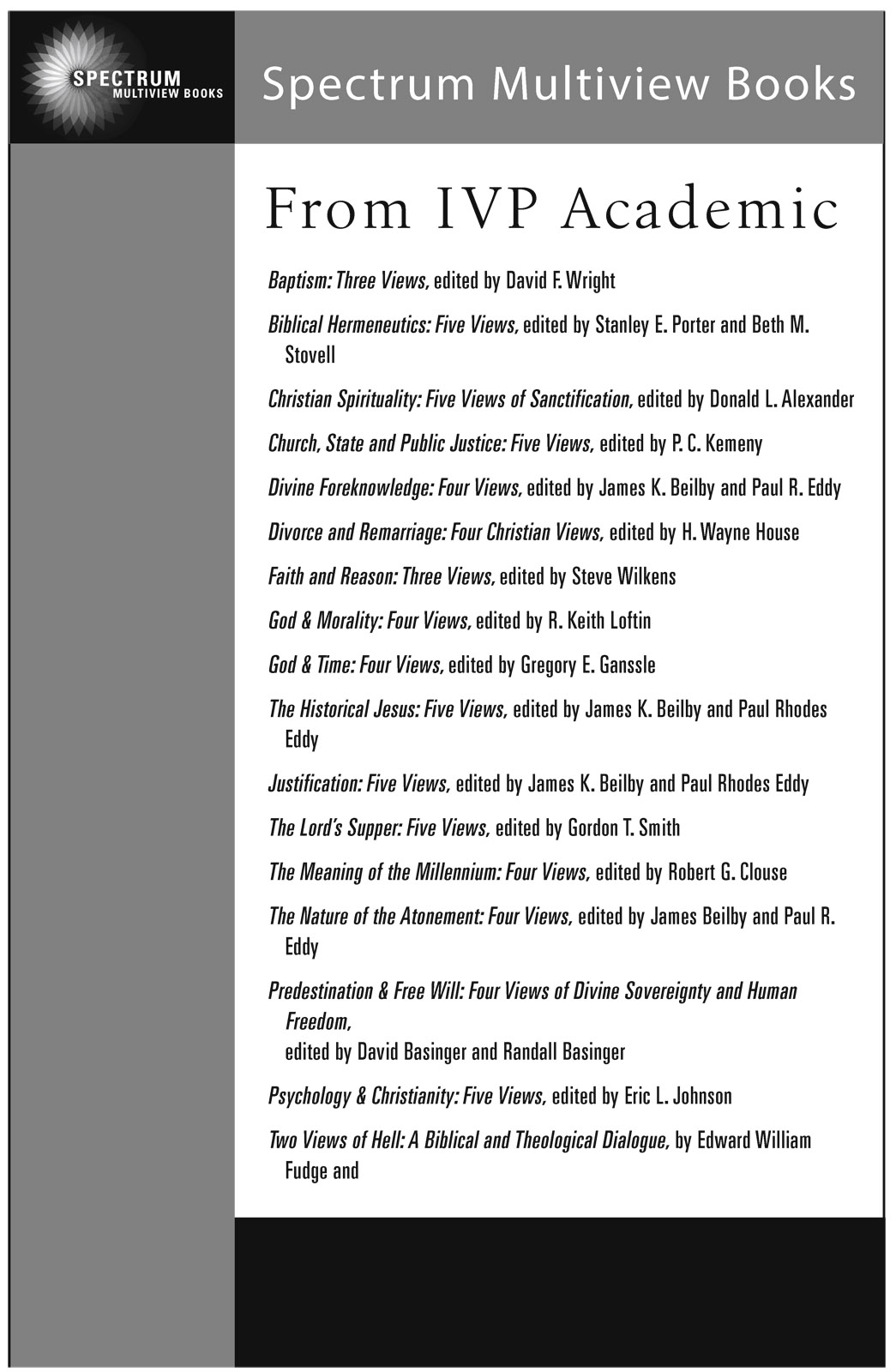
The Atonement: An Introduction
BY PAUL R. EDDY AND JAMES BEILBY
T his book is concerned with the complexities of the Christian view of the atonementthat is, the saving work of Jesus Christ. Broadly speaking, the term atonementone of the few theological terms that is wholly and indigenously Englishrefers to a reconciled state of at-one-ness between parties that were formerly alienated in some manner Today however, two decades later, the waterway has begun to flow anew, and the atonement is again a matter for serious and widespread discussion at the theological roundtable.
A number of factors have served to foster renewed conversation and exploration concerning the atonement within Christian theological circles. A number of feminist and womanist critiques of traditional interpretations of the atonement have highlighted what many consider to be two troubling as
Another impetus behind the current renewed interest in the atonement involves the interdisciplinary reflections of literary critic Ren Girard and his scapegoat theory of ritual violence.
Another factor that is highlighted in many of the current conversations
In no small part due to the landmark work of Gustaf Aulns (1879-1978) Christus Victor, the variety of atonement images and theories have come to be commonly categorized under three broad paradigms: Christus Victor (or That is, each paradigm sees the central thrust of the work of Christ as designed to address a different fundamental problem that stands in the way of salvation.
The Christus Victor Paradigm
The Christus Victor paradigm, known alternatively as the classic or dramatic model, can be described as Satanward in its focus. In Aulns words, the central theme of this approach is the idea of the Atonement as a Divine conflict and victory; ChristChristus Victorfights against and triumphs over the evil powers of the world, the tyrants under which mankind is in bondage and suffering.
More specifically, the Christus Victor paradigm understands the work of Christ primarily in terms of his conflict with and triumph over those elements of the kingdom of darkness that, according to the New Testament, hold humanity in their clutches, that is, Satan and his demonic hosts (Lk 13:10-16; Acts 10:38; 2 Tim 2:26; Heb 2:14-15), the sin power (Jn 8:34; Acts 8:23; Rom 6; 7:14-25; 8:2), death (Rom 6:23; 1 Cor 15:56; Heb 2:15) and even, particularly in its curse elements, the law (Rom 7:8-13; 1 Cor 15:56; Gal 3:13). In addition, the harrowing of hell motif has fed into the Christus Victor theme from ancient times (i.e., Eph 4:8-10; 1 Pet 3:18-20).
In one form or another, this view seems to have dominated the atonement theology of the early church for the first millennium (thus the label classic view). In certain quarters this general approach crystallized into a more defined modelthe so-called ransom theory of the atonement. In the ransom theory, this conflict-victory theme was conjoined with the redemption-ransom motif to produce an explanatory model in which Jesus became the ransom by which God redeemed humanity from Satans power. Several elements came to characterize the theory: (1) Satan gained mastery over humanity when the first couple chose the path of sin in the garden. Satan retains this hold on humanity through the powers of the kingdom of darkness (sin, fear, death, etc.). (2) Through death, Jesus innocent life became the ransom price that was acceptable to Satan for the liberation/redemption of humanity. The New Testament passage often used to support this idea came from the very lips of Jesus: The Son of Man came not to be served but to serve, and to give his life as a ransom for many (Mt 20:28; Mk 10:45; cf. 1 Tim 2:6). (3) Finally, the ransom theory typically emphasizes that Christs victory was achieved by outwitting the devil. The inherent injustice of taking an innocent life as a ransom is the basis on which Christ defeats Satan (a notion tied to the words of Paul in 1 Cor 2:8).
Among the more notable exponents of some version of the ransom theory are Irenaeus (at least in its embryonic form), Origen (the first to explicate the theory in any kind of detail), Gregory of Nyssa, Gregory the Great and Rufinus.
However, with the coming of the eleventh century and Anselms satisfaction theory (including his critique of the more idiosyncratic elements of the ransom theory) came the demise of the predominance of the Christus Victor paradigm. Under Aulns assessment, Martin Luther revitalized the Christus Victor approach.
While aspects of the Christus Victor view and Aulns presentation of it have been subjected to criticismfor example, since Anselms famous critique, many have charged that it fosters a dangerous dualism, one that, among other things, threatens the very sovereignty of Godit nonetheless is widely acknowledged as highlighting an important element of the atonement that went largely neglected for centuries. At the very least it is clear that since the advent of Aulns book in 1931, a number of scholars have picked up on the Christus Victor theme, and have made it an important, if not the central, theme by which to understand the atoning work of Jesus Christ.

